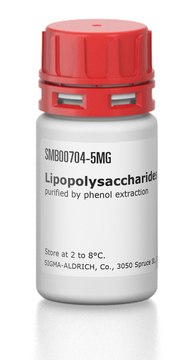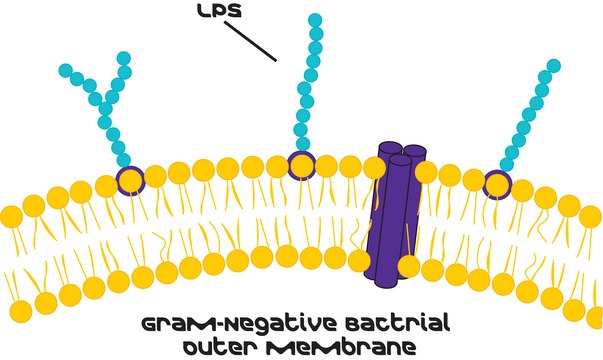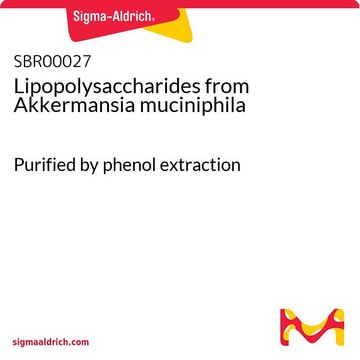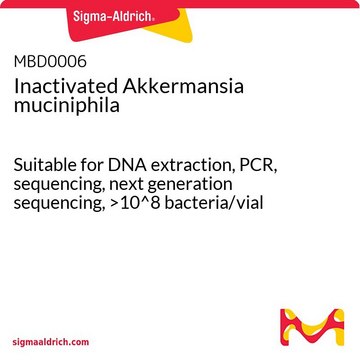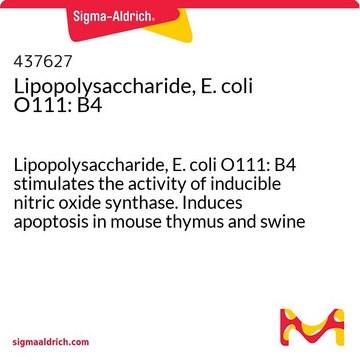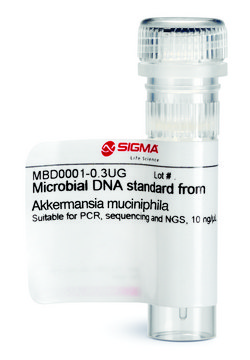SMB00801
Lipopolysaccharides from Proteus vulgaris
purified by phenol extraction
Synonyme(s) :
LPS
About This Item
Produits recommandés
Source biologique
bacterial (Proteus vulgaris)
Niveau de qualité
Forme
lyophilized powder
Produit purifié par
phenol extraction
Impuretés
≤3% Protein (Lowry)
Couleur
white to yellow cast
Solubilité
water: 4.90-5.10 mg/mL, faintly hazy to hazy, colorless to faintly yellow
Conditions d'expédition
ambient
Température de stockage
2-8°C
Description générale
Proteus vulgaris is a rod-shaped Gram-negative, facultative anaerobe bacterium. It inhabits the intestinal tract of humans and animals and can be found in soil, water and feces. P. vulgaris is a member of the Enterobacteriaceae family which are opportunistic pathogens in humans, responsible for urinary tract and burn infections.
The chemical structures of LPS from Proteus sp. are different from each other.
Actions biochimiques/physiologiques
Autres remarques
Produit(s) apparenté(s)
Code de la classe de stockage
11 - Combustible Solids
Classe de danger pour l'eau (WGK)
WGK 3
Point d'éclair (°F)
Not applicable
Point d'éclair (°C)
Not applicable
Faites votre choix parmi les versions les plus récentes :
Certificats d'analyse (COA)
Vous ne trouvez pas la bonne version ?
Si vous avez besoin d'une version particulière, vous pouvez rechercher un certificat spécifique par le numéro de lot.
Déjà en possession de ce produit ?
Retrouvez la documentation relative aux produits que vous avez récemment achetés dans la Bibliothèque de documents.
Notre équipe de scientifiques dispose d'une expérience dans tous les secteurs de la recherche, notamment en sciences de la vie, science des matériaux, synthèse chimique, chromatographie, analyse et dans de nombreux autres domaines..
Contacter notre Service technique